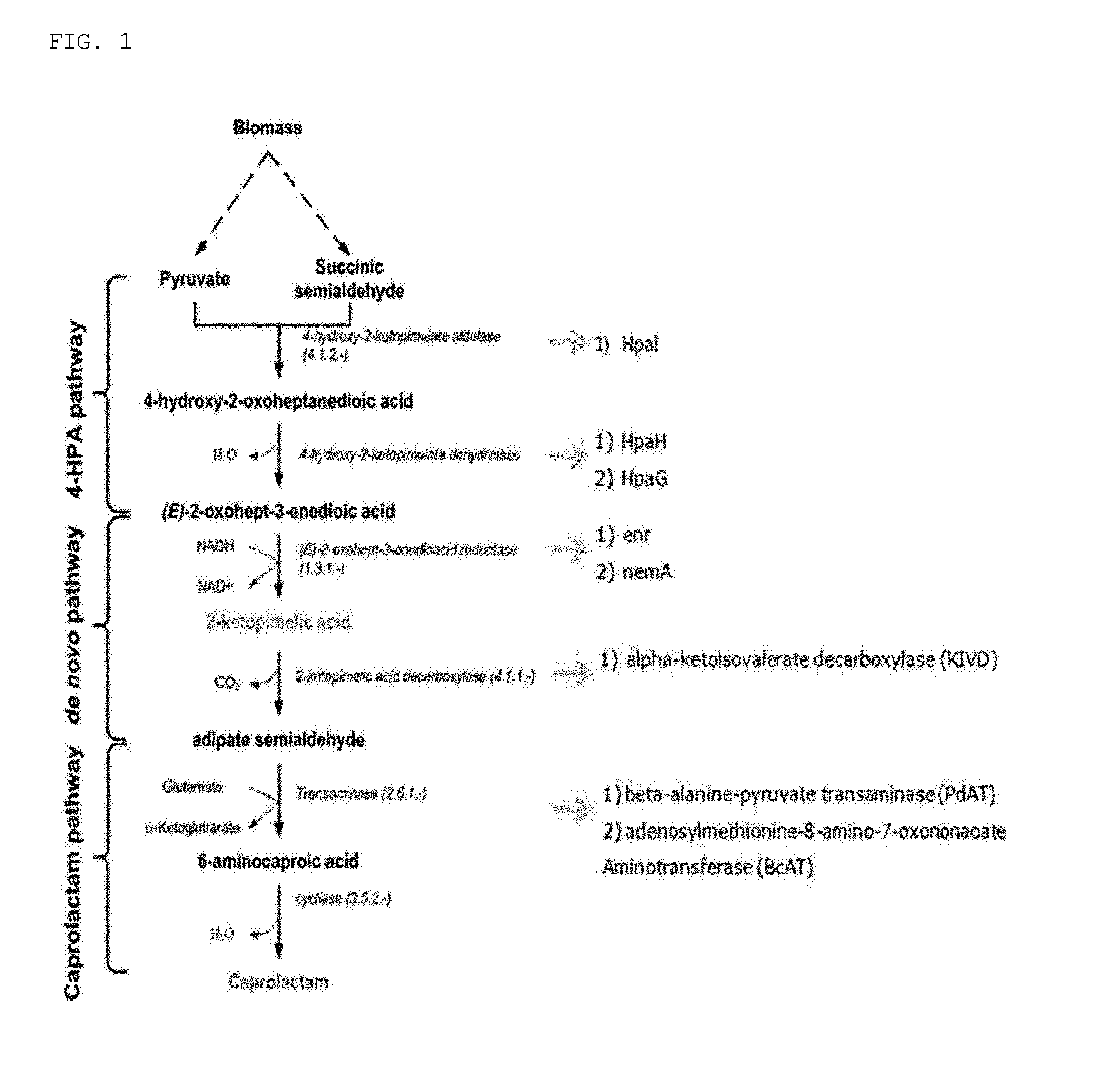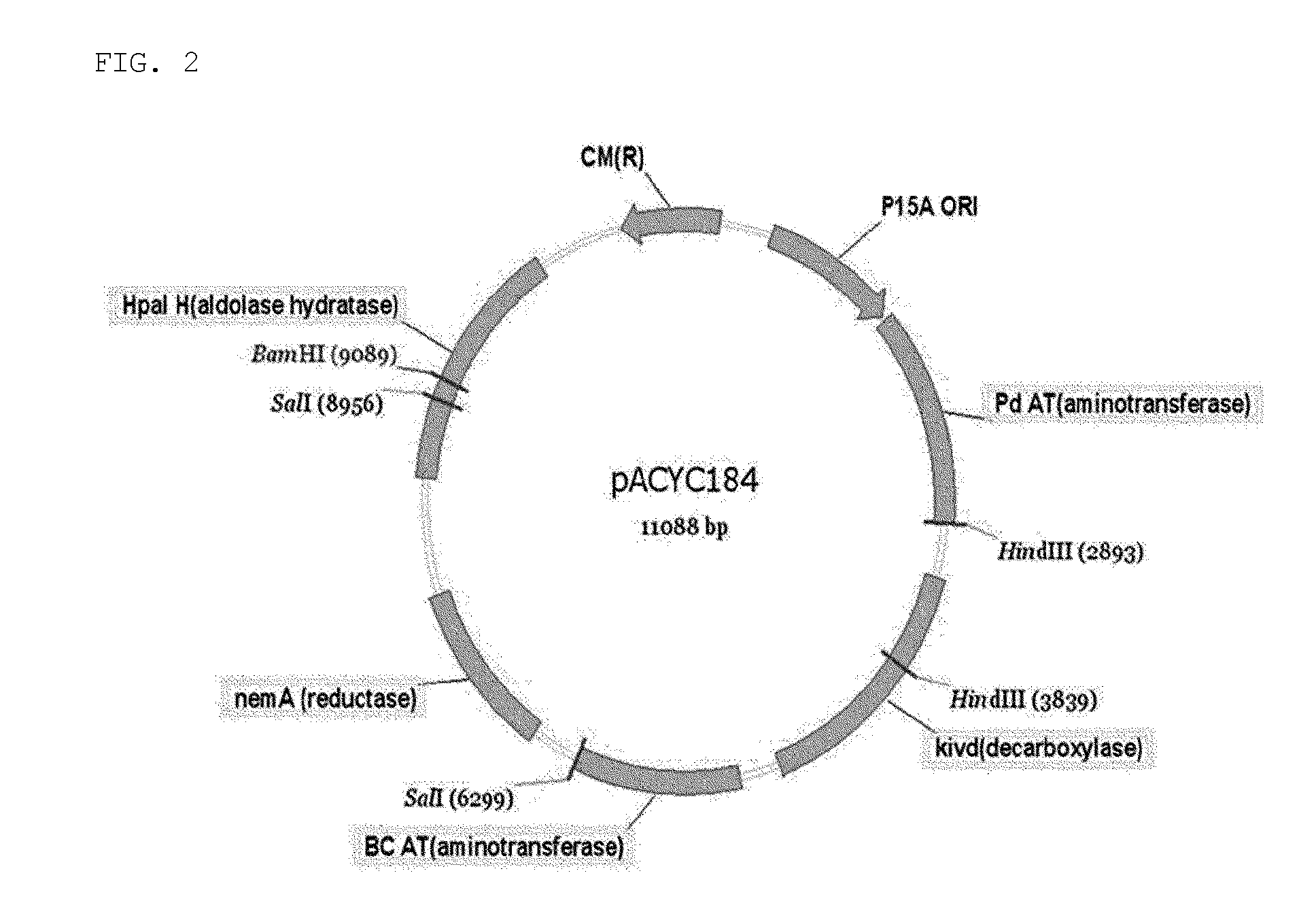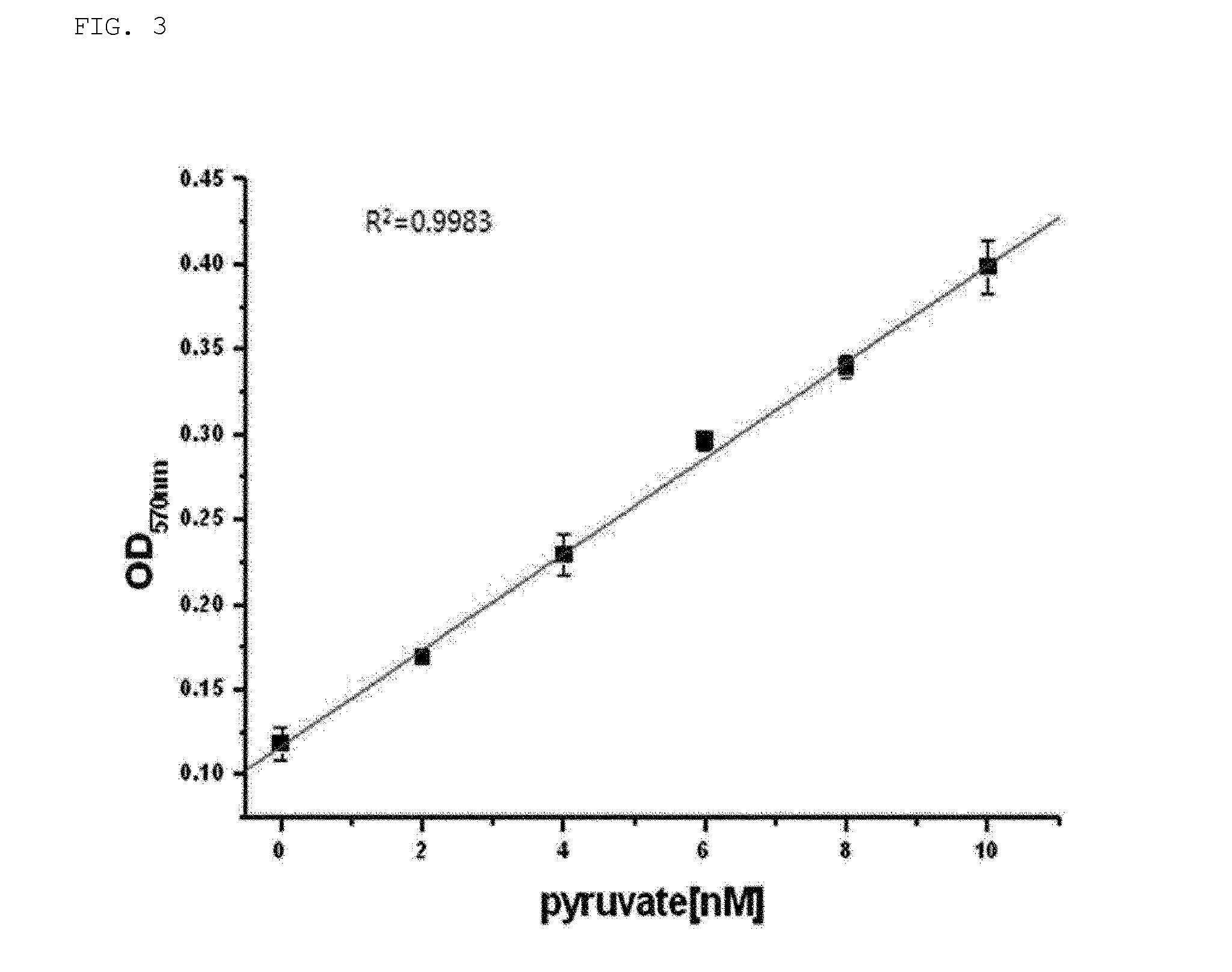Biological Synthesis of 6-Aminocaproic Acid and Transgenic Microorganism Therefor
a technology of aminocaproic acid and biosynthesis, which is applied in the field of recombinant microorganisms, can solve the problems of difficult to avoid inconvenient use of natural microorganisms for efficiently producing target products at industrial level, and inability to manipulate natural microorganisms. to achieve the effect of producing target products at the industrial level, and avoiding the formation of ammonium sulfa
- Summary
- Abstract
- Description
- Claims
- Application Information
AI Technical Summary
Benefits of technology
Problems solved by technology
Method used
Image
Examples
example 1
Cloning of Genes Encoding Enzymes in the Biosynthetic Pathway of 6-Aminocaproic Acid and Construction of Vectors
[0095]The genes encoding enzymes in the pathway biosynthesizing 6-aminocaproic acid from pyruvate were cloned from E. coli.
[0096]Specifically, HpaI gene (SEQ ID NO: 1) encoding aldolase, which converts pyruvate and / or succinic semialdehyde to 4-hydroxy-2-oxoheptanedioic acid; HpaH gene (SEQ ID NO: 2) encoding dehydratase, which converts 4-hydroxy-2-oxoheptanedioic acid to 2-oxohept-3-enedioic acid; nemA gene (SEQ ID NO: 4) encoding reductase, which converts 2-oxohept-3-enedioic acid to 2-ketopimelic acid; KIVD (alpha-ketoisovalerate decarboxylase) gene (SEQ ID NO: 5) encoding decarboxylase, which converts 2-ketopimelic acid to adipate semialdehyde; and PdAT (beta-alanine-pyruvate transaminase) gene (SEQ ID NO: 6) and BcAT (adenosylmethionine-8-amino-7-oxononanoate aminotransferase) gene (SEQ ID NO: 7) encoding transaminase, which convert adipa...
example 2
Confirmation of Each Enzyme and Fusion Protein
[0101] Expression and Purification of Each Enzyme and Fusion Protein
[0102]The plasmids, namely, pETHpaI, pETHpaH, pETnemA, pETKIVD, pETBcAT, pETPdAT, pETHpaI-HpaH, and pACYCWG prepared in Example 1, were transformed into E. coli BL21(DE3) via thermal shock. The transformant was cultured in an LB medium containing 50 μg / mL of antibiotics at 37° C. When the culture solution of the transformant reached a concentration of A600=0.5, 0.5 mM of IPTG (isopropyl-β-thio-D-galactopyranoside) was added, and the resultant was further cultured for 3 hours at 37° C. The cultured cells were collected by centrifugation and the pellet produced was disrupted by sonication. After the disruption of pellet, HpaI (SEQ ID NO: 8), HpaH (SEQ ID NO: 9), HpaI-HpaH (SEQ ID NO: 10), nemA (SEQ ID NO: 11), KIVD (SEQ ID NO: 12), PdAT (SEQ ID NO: 13), and BcAT (SEQ ID NO: 14) were purified from the supernatant using Ni-NTA agarose (Qiage, Germany) and an Econo Pac Chroma...
example 3
Confirmation of Activities of Purified Enzymes
Confirmation of Activity of Purified Aldolase-Dehydratase (HpaI-HpaH)
[0103]An enzymatic reaction was carried out to confirm the conversion of pyruvate and / or succinic semialdehyde to 2-oxohept-3-enedioic acid by aldolase and aldolase-dehydratase (HpaI-HpaH) enzymes (purified using E. coli transformed into pETHpaI-HpaH) purified in Example 2-1.
[0104]Specifically, 4 g / L of pyruvate, 4 g / L of succinic semialdehyde (SSA), which are substrates, and 50 mM of MnCl2, serving as a cofactor, were mixed together with aldolase, which is a protein expressing purified HpaI, and aldolase-dehydratase expressed by ligating HpaI and HpaH, both of which were purified in Example 2-1 above, respectively. The volume was then adjusted by 100 mM HEPES buffer (pH 8.0), and the reaction was carried out overnight at 30° C. After the reaction, the change in concentration of pyruvate, a substrate, was confirmed by measuring absorbance at A570 using a pyruvate assay...
PUM
| Property | Measurement | Unit |
|---|---|---|
| TM | aaaaa | aaaaa |
| TM | aaaaa | aaaaa |
| concentration | aaaaa | aaaaa |
Abstract
Description
Claims
Application Information
 Login to View More
Login to View More - R&D
- Intellectual Property
- Life Sciences
- Materials
- Tech Scout
- Unparalleled Data Quality
- Higher Quality Content
- 60% Fewer Hallucinations
Browse by: Latest US Patents, China's latest patents, Technical Efficacy Thesaurus, Application Domain, Technology Topic, Popular Technical Reports.
© 2025 PatSnap. All rights reserved.Legal|Privacy policy|Modern Slavery Act Transparency Statement|Sitemap|About US| Contact US: help@patsnap.com



